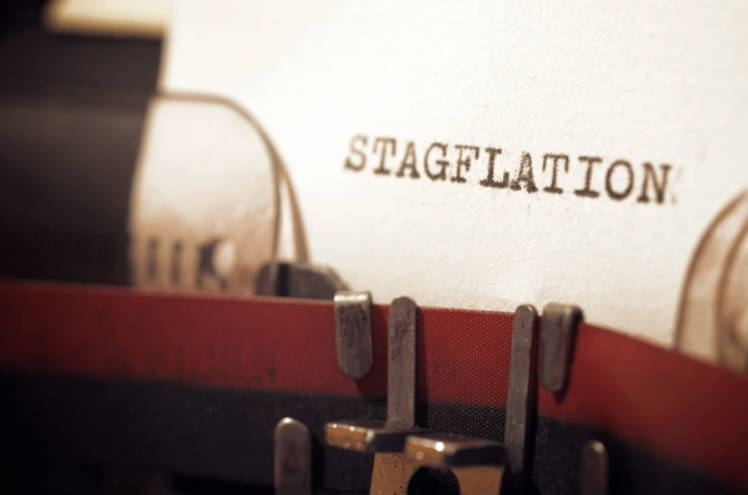Important Information
This website is managed by Ultima Markets’ international entities, and it’s important to emphasise that they are not subject to regulation by the FCA in the UK. Therefore, you must understand that you will not have the FCA’s protection when investing through this website – for example:
- You will not be guaranteed Negative Balance Protection
- You will not be protected by FCA’s leverage restrictions
- You will not have the right to settle disputes via the Financial Ombudsman Service (FOS)
- You will not be protected by Financial Services Compensation Scheme (FSCS)
- Any monies deposited will not be afforded the protection required under the FCA Client Assets Sourcebook. The level of protection for your funds will be determined by the regulations of the relevant local regulator.
Note: Ultima Markets is currently developing a dedicated website for UK clients and expects to onboard UK clients under FCA regulations in 2026.
If you would like to proceed and visit this website, you acknowledge and confirm the following:
- 1.The website is owned by Ultima Markets’ international entities and not by Ultima Markets UK Ltd, which is regulated by the FCA.
- 2.Ultima Markets Limited, or any of the Ultima Markets international entities, are neither based in the UK nor licensed by the FCA.
- 3.You are accessing the website at your own initiative and have not been solicited by Ultima Markets Limited in any way.
- 4.Investing through this website does not grant you the protections provided by the FCA.
- 5.Should you choose to invest through this website or with any of the international Ultima Markets entities, you will be subject to the rules and regulations of the relevant international regulatory authorities, not the FCA.
Ultima Markets wants to make it clear that we are duly licensed and authorised to offer the services and financial derivative products listed on our website. Individuals accessing this website and registering a trading account do so entirely of their own volition and without prior solicitation.
By confirming your decision to proceed with entering the website, you hereby affirm that this decision was solely initiated by you, and no solicitation has been made by any Ultima Markets entity.
I confirm my intention to proceed and enter this websiteWhat is Stagflation? Will It Return in 2025
Stagflation is often called the worst of both worlds in economics. It occurs when an economy faces high inflation, weak growth, and rising unemployment at the same time. The reason it is so feared is simple: the usual policy tools conflict. Stimulus can lift growth but fuel more inflation, while rate hikes may cool prices but worsen job losses. You might be wondering: what is stagflation?
The word stagflation was first used in 1965 by British politician Iain Macleod to describe the UK’s economic troubles. It became widely recognised in the 1970s, when global oil shocks caused soaring prices alongside slowing economies.

Lessons from the 1970s
The oil embargo of the 1970s sent crude prices up more than tenfold, fuelling inflation across the world. At the same time, growth slowed sharply, and unemployment increased. Policymakers struggled for nearly a decade before very tight monetary policy finally restored price stability in the early 1980s.
This episode shaped how economists think about stagflation today: a rare but damaging mix that can last years if not addressed properly.
What is Stagflation? Why Does it Happen
Economists highlight several triggers that can push economies toward stagflation:
- Supply shocks: sudden disruptions, such as oil crises or supply-chain breakdowns, raise production costs and consumer prices.
- Policy mistakes: overly loose monetary policy or heavy regulation can fuel inflation without generating growth.
- Global pressures: tariffs, trade wars, or currency swings can add cost pressures while slowing demand.
To spot stagflation risks, analysts track inflation, unemployment, GDP growth, oil prices, and monetary policy signals. When inflation rises while growth and jobs weaken, the alarm bells ring.

Stagflation in 2025: Are We Close?
United States
Inflation is above target but not extreme, with CPI at 2.7% in July and core at 3.1%. Growth looks strong, with GDP rebounding 3.3% annualised in Q2 after a dip in Q1. The labour market, however, is cooling: unemployment has risen to 4.3%, and job gains slowed to just 22,000 in August.
Overall, the US is not in stagflation. Growth remains firm, inflation is manageable, though the jobs market is losing some momentum.
Euro Area
The eurozone shows low inflation at 2.1% in August, sluggish growth of just 0.1% in Q2, and historically low unemployment at 6.2%.
This combination signals a slowdown, not stagflation. Prices are near the ECB’s target, and jobs remain resilient.
United Kingdom
The UK faces the most pressure. Inflation is higher than peers at 3.8%, growth slowed to 0.3% in Q2, and unemployment has edged up to 4.7%, with payroll data showing strain in the labour market.
Among major economies, Britain shows the closest resemblance to stagflation. Sticky inflation, weak growth, and a cooling job market, though it still falls short of a full-blown case.
Jackson Hole 2025: Powell’s warning
At the Federal Reserve’s Jackson Hole summit, Jerome Powell highlighted the fragile balance in the US economy. He warned that “risks to inflation are tilted to the upside, and risks to employment to the downside.”
Powell described the labour market as a “curious kind of balance”, where both worker demand and supply have slowed. He noted that job growth has averaged only 35,000 per month in the past three months, after downward revisions.
He also flagged tariffs as “clearly visible in consumer prices”, suggesting further inflation pressure ahead. Markets reacted by rallying, betting on a rate cut in September, though Powell’s tone was cautious.

How Stagflation Affects People and Markets
If stagflation takes hold, its impact spreads widely:
- Jobs: Companies facing higher costs often cut staff or delay hiring, leading to fewer opportunities and greater job insecurity.
- Investors: Rising prices with weak growth can erode returns. Safe-haven assets like gold often benefit, while cyclical stocks may lag.
- Households: Everyday costs rise while incomes stagnate. Families may need to adjust spending, pay down debt, and build emergency savings.
These effects explain why stagflation is seen as so damaging: it squeezes workers, businesses, and investors at the same time.
What Could Tip the Balance in 2025
Several risks could push the global economy closer to stagflation:
- Energy shocks: A sudden oil price spike would lift inflation and hurt growth.
- Tariffs and trade barriers: Already adding to consumer prices, they could weigh further on demand.
- Labour market risks: If job creation slows further, unemployment could rise sharply.
Final Thoughts
So, what is stagflation in 2025? At this stage, it remains a risk, not a reality.
- The US is cooling but still growing.
- The euro area is weak but stable.
- The UK faces the most uncomfortable mix, with sticky inflation and a softening job market.
Stagflation is not here yet, but the balance is fragile. Energy prices, tariffs, and labour market shocks could tip the scale. For investors and households alike, the lesson is clear: stay alert, stay diversified, and prepare for uncertainty.
Disclaimer: This content is provided for informational purposes only and does not constitute, and should not be construed as, financial, investment, or other professional advice. No statement or opinion contained here in should be considered a recommendation by Ultima Markets or the author regarding any specific investment product, strategy, or transaction. Readers are advised not to rely solely on this material when making investment decisions and should seek independent advice where appropriate.












